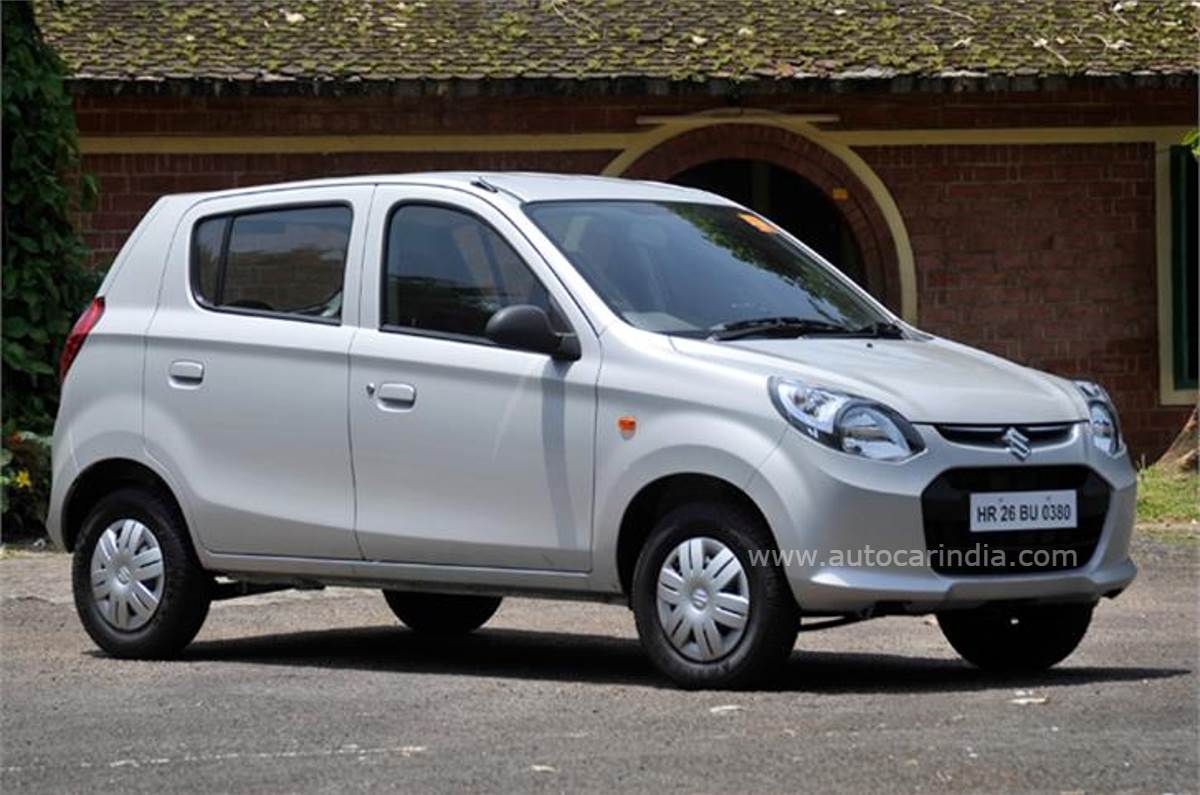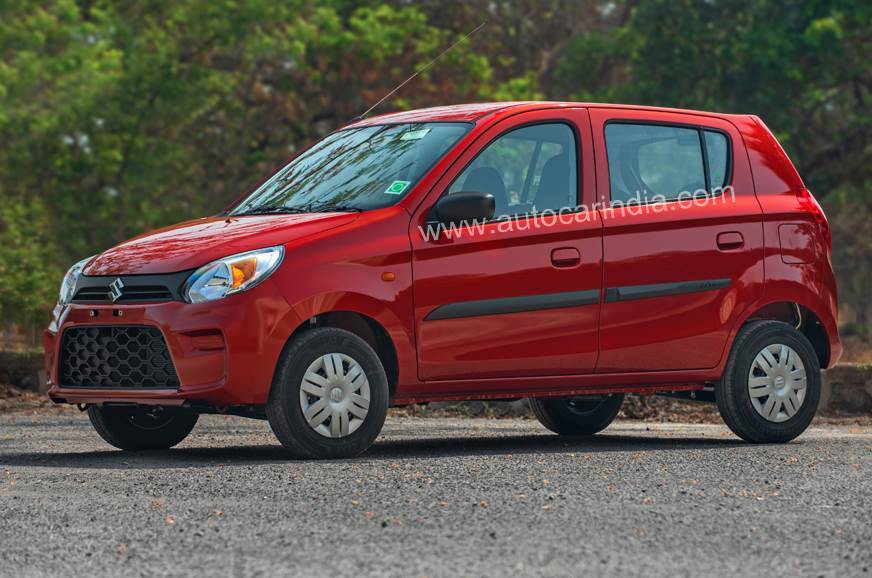As we wait for the all-new Alto K10, we dive into the country’s highest-selling car and how it became a household name for many Indians.
With over 40 million cars sold, it is safe to say that the small Maruti Suzuki Alto has made a big impact on the Indian automotive industry. It has been the country’s longtime best-selling hatchback and a default choice for many looking to graduate to four wheelers. Launched in 2000, the Alto was Maruti Suzuki’s people car for the new millennium.
The first 800 was technically an Alto
We may have been introduced to the Alto nameplate in October 2000, but the rest of the world had been long acquainted with it. The first generation of the Suzuki Alto was launched in the Japanese market in 1979 as a back-to-basics city car. Built to Japan’s Kei (small or micro) car specifications, which attracted a lower rate of tax, the Alto, with its low price tag, met the transportation needs of millions of people in that country. The iconic Maruti Suzuki 800, codenamed the SS80, that we had in India was called the Alto abroad.
The Alto for India entered at a time when the hatchback segment was wildly popular, and Maruti placed the Alto as a more premium alternative to the 800. The first Alto came with the option of two engines – the 45hp, 796cc petrol engine from the 800 hatchback, and a 65hp, 1.1-litre, 4-cylinder petrol motor. Offering the Alto with two engine options enabled Maruti Suzuki to target both ends of the market at that time – one comprising of cars like the Daewoo Matiz, the other with cars like the Hyundai Santro.
Autocar India was the first to drive the Alto in India back in 2000 and we found that it was a capable hatchback. The 796cc engine, we commented, was best if one wanted good fuel efficiency, while the 1.1-litre engine impressed us with its overall performance. Though we found its interior cramped, we concluded that the Alto was the best small car you could buy at the time. We also predicted that the Alto would go on to become India’s best-selling hatchback. We had to wait a little before our prediction was proven right.
Alto did not set the sales chart on fire right away
The Alto wasn’t a runaway success right from the day of its launch. The catch here was the 800, which still lured many first-time car buyers. Maruti initially struggled to convince buyers to pick the Alto over the iconic 800 despite the former looking fresher, having better engine and gearbox options, and more features without a big premium over the 800.
To draw more buyers to the Alto, Maruti made some strategic moves. It narrowed the 800’s range, launched more affordable variants of the Alto and marketed it aggressively. The efforts paid off and after three years, the Alto took the throne from the 800 as India’s best-selling car.
Since then, the Alto sales continued to grow, reaching milestones upon milestones. In 2008, Maruti Suzuki sold 10 lakh units of the Alto, making it only the fourth car in the Indian market to hit that milestone after the 800, Santro and the Omni. The Alto took just four years to sell another 10 lakh units and in 2016, it crossed the 30 lakh milestone, making it the only car in India to do so. By August 2020, Maruti Suzuki had sold 40 lakh Altos.

The Alto K10 was introduced in 2010 and was sold alongside the 796cc version.
For almost the whole of the first decade since its launch, the Alto did not see any significant changes, with only a minor facelift. The 1.1-litre, 4-cylinder engine was discontinued within a few years of the car’s launch, likely due to low sales. It was a real shame as the engine made the Alto a terrific performer. Alto owners looking for more performance had to wait till 2010 when the Alto K10 was introduced with the more spirited 1.0-litre engine. It was sold alongside the 796cc model, once again giving buyers a choice between efficiency and performance (although the 1.0-litre engine also boasted good efficiency numbers).
In our road test of the Alto K10, we found the hatchback to be much better than the 796cc version in terms of performance. Its refreshed styling also made the Alto K10 look more contemporary.
New Alto 800, K10 and the emergence of rivals
In 2012, Maruti Suzuki launched a new generation for the Alto’s 796cc version – it was now named the “Alto 800”. While the Alto 800 was based on the same platform as before and carried the F8 engine, the facelift saw a completely new exterior and interior design. Maruti also tweaked the engine and the gearbox to make the Alto more friendly to drive.
The Alto received a major update in 2012.
Around that time, Hyundai had launched the Eon in the Indian market as a competitor to the Alto. While it was pricier than the Maruti, its attractive design, well-appointed interior and a relatively long list of equipment meant that the Hyundai was all geared up to pull people out of Maruti showrooms. However, despite the many attributes of the Eon, the Alto continued to remain the segment leader.
In 2015, Renault launched the Kwid, a hatchback with SUV looks. This crossover-like design was unprecedented in the budget hatchback segment, and with the space advantage, the Kwid had all the ingredients to disrupt the entry-level hatchback market. However, this Renault model could not take a whole lot of buyers away from the Alto and Maruti continued to outsell the Kwid.
The Alto’s continued dominance in the budget hatchback segment despite the arrival of the Eon and the Kwid showed that while the rivals were trying to break the norm, the Alto, which was staying true to its roots, appealed more to the budget car buyers.
A year prior to the Kwid’s launch, Maruti had introduced the second-generation Alto K10. It got a fresh design both inside and out, and, more crucially, for the first time, the Alto was being offered with an AMT automatic. The convenience of an automatic only made the Alto more appealing.
Alto’s shift to the BS6 era
The Alto received another face lift in 2019.
In 2019, Maruti Suzuki gave a major update to the Alto, making it compliant with the forthcoming emission and safety norms. It got a few cosmetic changes to the exterior along with a new dashboard design on the inside, and the “800” was dropped from the name. Maruti made structural changes and added more safety features to comply with the norms. It also changed the exhaust to meet the stringent BS6 emission norms. The transition to BS6 saw Maruti axe the K10 entirely and continue the Alto brand with just the 796cc version.
New Alto K10
The Alto K10, however, will return in its newest avatar on August 18. Based on Maruti Suzuki’s Heartect platform, the second generation model will be sold alongside the old model which will continue with its 796cc engine. The teaser image shows a more grown-up design for the Alto, and leaked images of the interior reveal an upright dashboard with the touchscreen infotainment system being the main highlight.
Maruti Suzuki seems to have taken efforts to make the Alto more upmarket, however, at its core, it still remains a budget car. Whereas the previous Alto came at a time when the hatchback segment was popular, the new K10 comes at a time when the entry-level hatchback market is shrinking. It is likely to still appeal to buyers in tier 2 and tier 3 cities, and even in tier 1 cities as a second car.
Will it replicate the success of the old Alto? That is something we will have to wait and see.
Also see:
India at 75: 10 most significant cars since Independence


























